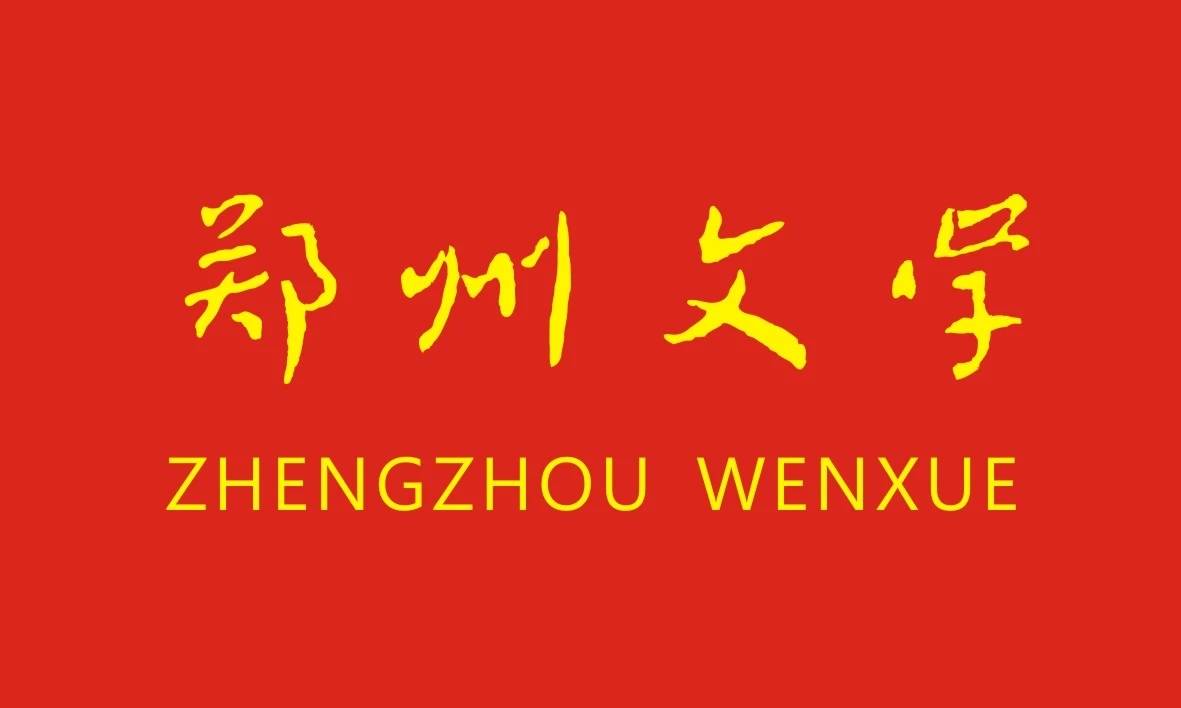同义语修辞转换是英语教学常用的一种方法,在转换过程中,除了形式上的变化以外,它们之间也存在着细微的语义和语用之间的差别。
通过转换练习与对它们之间差别的鉴别,学生不但可以正确理解原句,扩大词汇量,熟练句型,而且可以养成遣词造句与灵活得体地运用语言的能力,从而培养英语语感与语言鉴赏能力。
常见的英语转换方法有以下十种:替代(substitution)、移级(rank-shift)、联合(combination)、嵌饰(embedment)、分解(decomposition)、换置(transposition)、约缩(condensation)、扩展(expansion)、引述(reporting)和释义(interpretation)。
一、同义语可替代,替代求左右搭配
英语中同义与近义语很多,用另一个词语来替代句中的同义或近义语而不改变语义的现象叫替代。
从语义上看,词语之间主要存在有三种关系: 相似、内包与对比,也就是三类词语:同义词、类义词与反义词。从语用上看,它们可分别用于口头、书面、庄重、幽默、粗俗、学术等不同文体中,也可以用于不同的时间、地点、人物等不同的场合中。

1、同义词
例如:
1) The fireman extinguisheda fire. (正式书面用语)
The fireman put outa fire. (非正式口头用语)
2) Most children like candies.(美式英语)
Most children like sweets.(英式英语)
3) What he said hurtme.(语气庄重而严肃)
What he said bitme. (隐喻体现幽默)
4) I apprehendedthe perpetrator. (正式用语,法庭上对法官的用语)
I collaredthe creep. (口语,如在酒吧对同事的用语)
5) You have lied. (直接,语气较强 )
You have distorted the facts. (间接,语气委婉)
6) It’s rather chillythis morning. (在夏季时使用)
It’s rather coldthis morning. (在冬季时使用)
7) The climbers zigzagged their wayup the mountains. (形象,具体)
The climbers made their wayup the mountains. (抽象,一般)
2、类义词
类义词表示词所代表的概念之间的类属关系。一组类义词由表示类概念的上义词与表示种概念的下义词组成。它们之间的关系为语义内包,即种概念内包于类概念之中。
类概念加属差等于种概念,或种概念减属差等于类概念。也就是说,上义词加上适当的修饰语便可替代与其对应的下 义词。上义词表达通俗易懂,属一般常见词语;下义词表达生动形象准确,属于具体词汇,但使用范围小,增加了语言学习的难度。例如:

1) A drizzlewill save the dried crops.
A fine rainwill saved the dried crops.
2) A strollafter meal benefits you a good deal.
A leisured walkafter meal benefits you a good deal.
3) She remained calm under thegazeof so many angry eyes.
She remained calm under the steady lookof so many angry eyes.
4) Only by sippingcan tea be properly tasted.
Only by drinking slowlycan tea be properly tasted.
3、反义词
反义词有助于理解某些词的准确含义,通过加上否定词或否定前缀便可以替代那些在意义上相反的词语,但从语用角度来看,加否定词语气较强。例如:
1) Many of his friends were there.
Not a few of his friends were there.
2) You are careless.
You are not careful.
3) Remember me to your uncle.
Don’t forget me to your uncle.
以上三类主要是从语义和语用方面对同义语转换进行分析,有许多词语语义相同,但搭配不同,因此在同义语转换的过程中,还要注意左右搭配,务求表达形式的正确性。例如:
1) He is the greatest livingnovelist. (前置定语)
He is the greatest novelist alive. (后置定语)
2) What he said affectedus much. (动词)
What he said had a great effecton us. (名词)
3)This is a highbuilding.(修饰物体)
He is a tallman. (修饰人与物)
二、派生词可移级,移级求动静虚实
移级就是词级的移动,其转换过程是以派生词的词类转换或句法的功能转换为根据的。
词级可分为三级:名词、代词为一级;动词、形容词为二级;副词为三级;低一级词汇仅修饰上一级词,不越级修饰。移级可以分为升级与降级:副词变成形容词或动词、形容词变成名词为升级(名词化现象),反之为降级。
移级不仅显示词语句法功能的移动,同时也引起句义重心的转移,降级移动则句义由静变动,由实词变虚词,描述事物的运动过程;升级由动变静,由虚词变实词,描述事物的性质与状态。
在这种转换过程中,不仅要指导学生明确词形和搭配上的变化,更要明确移级后的语义和语用差别。否则会导致语义重心的转移、歧义、甚至语病。例如:
1、He diedin the accident last year.(强调动作)
He was deadin the accident last year. (此句描述的是动作,而 was dead 表示死亡的状态,什么时间和原因死的为未知信息,从语义和语用上看,此句是病句)
2、There he fought bravely.(强调人物动作)
There he showed braveryin fighting.(强调人物动作特征)
There he was bravein fighting.(强调人物品质)
There he proved a bravefighter.(强调结果)
3、He walked homequiet.
He walked home quietly.
这两句话容易误解,但从词级修饰规律来看,第一句quiet为形容词,不修饰动词,故修饰代词he, 因此,第一句话的意思为:He walked home and he was quiet,暗含他可能不高兴。
第二句的quietly 为副词,故修饰动词walked,强调慢慢地走路的方式,暗含怕惊动别人。
4、He was reluctantto go there. (暗含他可能根本没有去)
He went there with reluctance. (他不情愿地去了)
5、It is importantto study Chinese well.
It is of great / much /no / little importanceto study Chinese well.
He hatesstaying at home.
He has / feels / bears / conceives ahatredof staying at home.
在以上两句形容词与动词名词化过程中,它们不但词级上升,而且搭配能力增强,信息量增加,使语言表达更加具体丰富。
三、组长句可联合,联合分并列复合
联合指运用连词或副词将逻辑上有一定关系的简单句联结起来的转换过程,可分为并列联合与复合联合,转换后成并列句与复合句。连词与副词在转换过程中不仅起着联结作用,更体现了语义上的逻辑关系。
常见的有下例十种关系:添加、对比、让步、条件、时间、原因、目的、结果、比较与方式。从语用来看,联合使语篇连贯,结构严谨,逻辑层次分明,语义明确。例如:
1、You are my friend ; He is my friend too. (添加)
He, as well asyou, is my friend.
Not onlyyou but alsohe is my friend.
2、He loves music; 原由网His wife hates it.(对比)
He loves music whilehis wife hates it.
3、He is a child; He knows a lot. (让步)
Child ashe is, iMlWnOIahe knows a lot.
Thoughhe is a child, he knows a lot.
4、Make a little more effort; You will succeed. (条件)
Make a little more effort andyou’ll succeed.
Ifyou make a little more effort, you’ll succeed.
5、I was taking a walk; I came across my old friend. (时间)
I was taking a walk whenI came across my old friend.
I came across my old friend whileI was taking a walk.
6、It was raining hard; I stayed at home. (因果)
It was raining ha原由网rd, therefore, I stayed at home.
It was raining hard, soI stayed at home.
Becauseit was raining h原由网ard, I stayed at home.
7、I left the door open; The cat could get in. (目的)
I left the door open so that/ in order thatthe cat could get in.
8、He broke the rules of the school; He had to leave. (结果)
He broke the rules of the school. As a result, he had to leave.
9、He has little money; I have little money too. (比较)
He has no moremoney thanI do.
10、Do this exercise; You have been taught how to do it. (方式)
Do this exercise as/ in the wayyou have been taught.
四、加细节可嵌饰,嵌饰显逻辑层次
嵌饰是一种添加细节的句型转换方法,它以一个单句为基础,将其它与此句有逻辑关系的短语与句子嵌入基础句,使其成为该基础句某个成分的修饰语,主要是名词修饰语。
嵌饰与联合一样,运用组合方式生成长句,以表达复杂、丰富而具体的含义,使语篇行文流畅而富有节奏,主次分明,凸显语篇逻辑层次。
修饰语与基干词语合成复合短语,修饰语一般位于基干词前,如果是短语或句子则后置,常见的后置修饰成分有介词短语、非谓语动词短语和关系从句。例如:
1、I like your salad; It’s tasty.
I like your tastysalad.
2、She had a daughter; She was five years old.
She had afive-year-olddaughter.
3、We should put the things in a room; Let’s find a room first.
Let’s find a room first to put the things in.
4、The teacher helped me in my study; I made great progress.
Helped by the teacher,I made great progress.
5、He was killed in an accident; Have you heard the news?
Have you news heard the news that he was killed in an accident?
6、He is absent; I know the reason.
I know the reason why he is absent.
五、冗长句可分解,分解为舍长求短
复合句与嵌饰成分虽然能够突出语篇重点,显示语篇逻辑层次,结构严谨,但有时句子冗长,结构繁杂,层次过多会增加了理解难度,因此可通过分解法来使复杂句变成简单句,从而使表达简单明了。分解转换可以简化结构,澄清句义,是课堂教学难句释义的基本手段。
例如:
Communications changed with the introduction of mobile phonesand the way we correspondedwent from writing letters to emailing. We started flying around the world and meanwhile, scientists figured out how to split the atom,previously thought to bethe smallest particle of the matter in the universe. (lesson2, unit20, module7. 北师大版)
本段含有with介词短语,定语从句we corresponded, how引导的不定式复合结构作宾语和过去分词短语 thought to be…作定语,可分解为下文:
As the mobile phones were introduced,communications changed. We also corresponded in a different wayand itwent from writing letters to emailing. We started flying around the world and meanwhile scientists figured out how they could split the atom. Scientists previously thought the atom wasthe smallest particles of the matter in the universe.
六、平直句可换置,换置乃调整顺序
换置是为了突出语义重点或平衡句子结构而对句子语序的重新调整。长句的开头与结尾一般为语义的重点所在,所以,在句子转换中我们常把需要强调的词语置于句首或句尾,这种改变句子语序的转换过程叫换置。例如:
1、I admire his learning, but I despise his character.
His learningI admire, but his characterI despise. (强调,加强语气)
2、I have seldom met him in the street.
Seldomhave I met him in the street. (强调)
3、The door opened and a man came in.
The door opened and incame a man. (强调,暗含那人不该进入)
4、The hunter killed the tiger.
The tiger was killed bythe hunter.
从信息论角度来看,第一句 the hunter是已知信息,killed the tiger是新信息;第二句 the tiger是已知信息,was killed是新信息, by the hunter则可能是强调新信息,暗含是猎人杀的,而不是其他人。
5、How to solve the problem remains a question.
Itremains a question how to solve the problem. (平衡句子结构)
6、A village lies at the foot of the mountain.
At the foot of the mountainlies a village. (平衡句子结构,在语篇中起衔接作用)
七、大化小可约缩,约缩为删繁就简
约缩是用较小的语言单位替代原句中较大的语言单位或用较短的表达法替代较长的表达法来完成句子转换的一种方法,也就是省略法,符合语言表达简洁原则。
常见的情况是将复合句转换成简单句,这种约缩转换一般是以短语替代从句来完成的。例如:
1、What he saidis right.
His wordsare right.(名词短语)
2、 As he was eager for success,he overworked himself.
Eager for success, he overworked himself. (形容词短语)
3原由网、Please show me how I’m to start the machine.
Please show me how to start the machine. (不定式短语)
4、She is soold that she can’t learn computer.
She is tooold to learn computer. (不定式短语)
5、 If it were not for the sun, there would be no life.
But for the sun, there would be no life. (介词短语)
6、 He liked the windows openwhen he slept.
He liked to sleep with the windows open. (介词短语)
7、 As she saw nobody was at home, she decided to leave a note.
Seeing nobody at home, she decided to leave a note. (分词短语)
八、小变大可扩展,扩展求枝而不蔓
扩展与约缩正好相反,它是用结构完整的句子替代省略句,或用结构舒展和表意具体的句式替代那些结构紧缩表意抽象的句式,如成语。
这种在句义上的扩充和在结构上的延伸主要用于注释句义、添加细节和平衡句子长短,具体例句见约缩部分,这里不在赘述。
九、他人语可引述,引述分直接间接
引述指引用他人的话语来进行论述,直接引用为直接引语;用自己的话来转述他人的话语为间接引语。
当直接引语转换成间接引语时,人称、时态、地点、语序等要做相应的变化,这是引述转换的难点,在陈述句、祈使句、疑问句和感叹句转述中,感叹句是最难的。
例如:
1、The man asked, “ Will you help me?” (一般疑问句)
The man asked whether / if I could help him.
2、“ When will you come here ?”asked he. (特殊疑问句)
He wanted to know when I would go there.
3、He said to me, “ please come again tomorrow.” (祈使句)
He asked me to go there again the next day.
4、He said “ I don’t know the news.” (陈述句)
He said that he didn’t know the news.
5、He shouted to me, “ go away!”(祈使句)
She ordered me to go away.
6、“ How beautiful our school is!” said he. (感叹句)
He exclaimed that their school was very beautiful.
十、形象语可释义,释义含释喻解释
释喻在句子转换过程中是指把那些含有比喻或借代以及那些具有特殊修辞效果的句子加以诠释的转换过程。语言表达可以直言其事,也可以借用比喻。比喻就是形象化的表达,形象化的表达增强了语言的表现力和美感。
由于形象化的表达是以联想与对比为基础的,不同的民族与不同的文化环境会使人产生不同的联想,养成不同事物比较的习惯,因此对英语中比喻和典故我们往往觉得很难理解,更不用说运用了。
因此我们有必要通过释喻转换来理解。常见的比喻有以下几种:明喻、隐喻、借代(转喻)、夸张、婉言法、反语、双关等。例如:
1、The moon is likea silver plate. (明喻)
The moon is round and bright.
2、She was the apple of his eyes. (隐喻)
He loves her dearly.
3、Rob stormedout of the house and slammed the door. (借喻)
Rob was very angry and went out of the house quickly and slammed the door.
4、The wind was whisperingin the pines. (拟人)
The wind was blowing past the pines.
5、 The kettleis boiling. (借代)
The water in the kettle is boiling.
6、Blood streamsdown from his forehead. (夸张)
Blood runs down from his forehead.
7、He passed awaythree years ago. (婉言法)
He died three years ago.
8、Seven days without water make one weak / week.(双关)
Without water for seven days one becomes weak.
总之,句型转换是基于语言内部的同义关系,通过结构的变换与词语的替代来转换生成同义句型。这种转换既促进了对语法结构的理解与掌握,也加深了对语义的理解,另外也提高了学生对不同句型的语用功能的辨别。
在转换的过程中,语言形式、语义与语用三者结合于一体,提高了学生语言运用的准确性、丰富性与得体性,同时大量的操练过程中,语言语用也趋于熟练。
隐喻思维与高中英语词汇教学
参考文献:
1. 庞人骐 《英语转换生成句法》,北京师范大学出版社,1985年.
2. 董燕萍《心理语言学与外语教学》, 外语教学与研究出版社, 2009年.
3. 唐青叶 《语篇语言学》,上海大学出版社,2009年.







